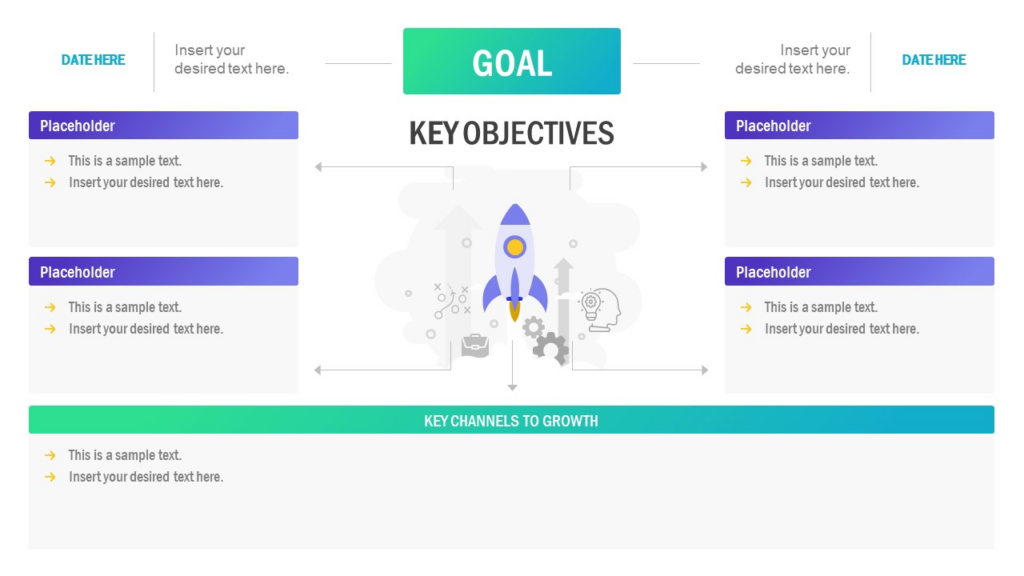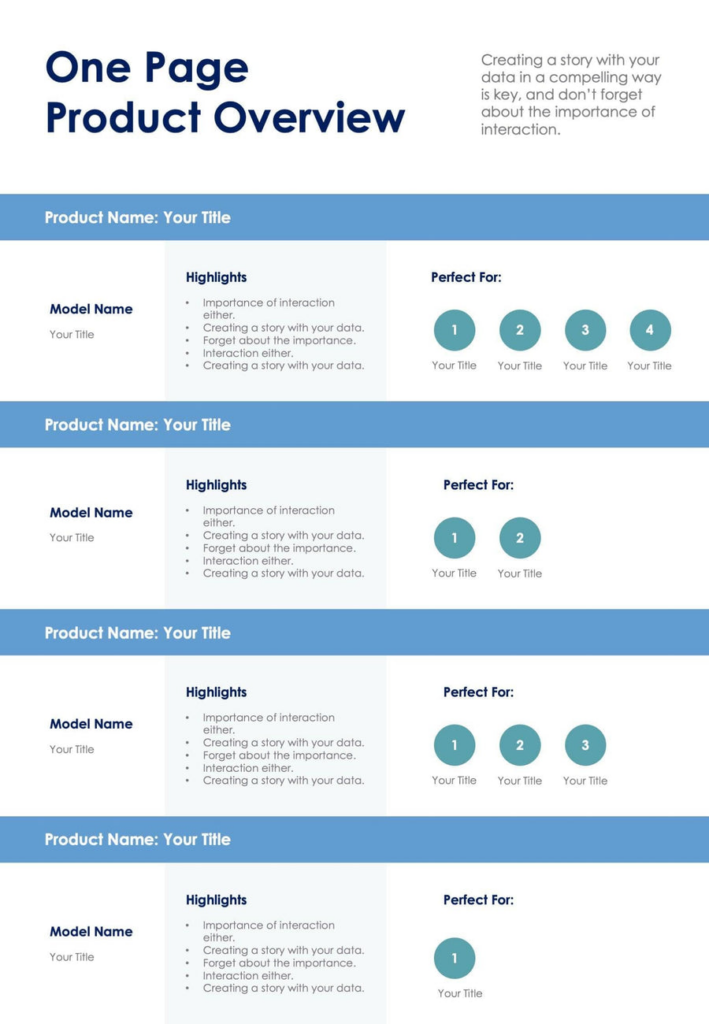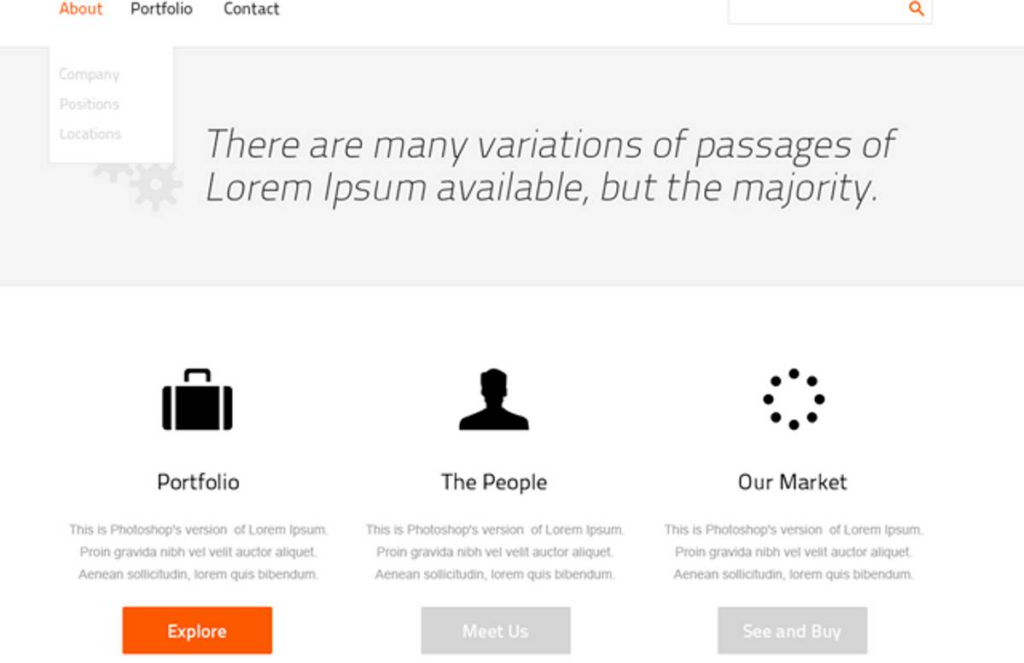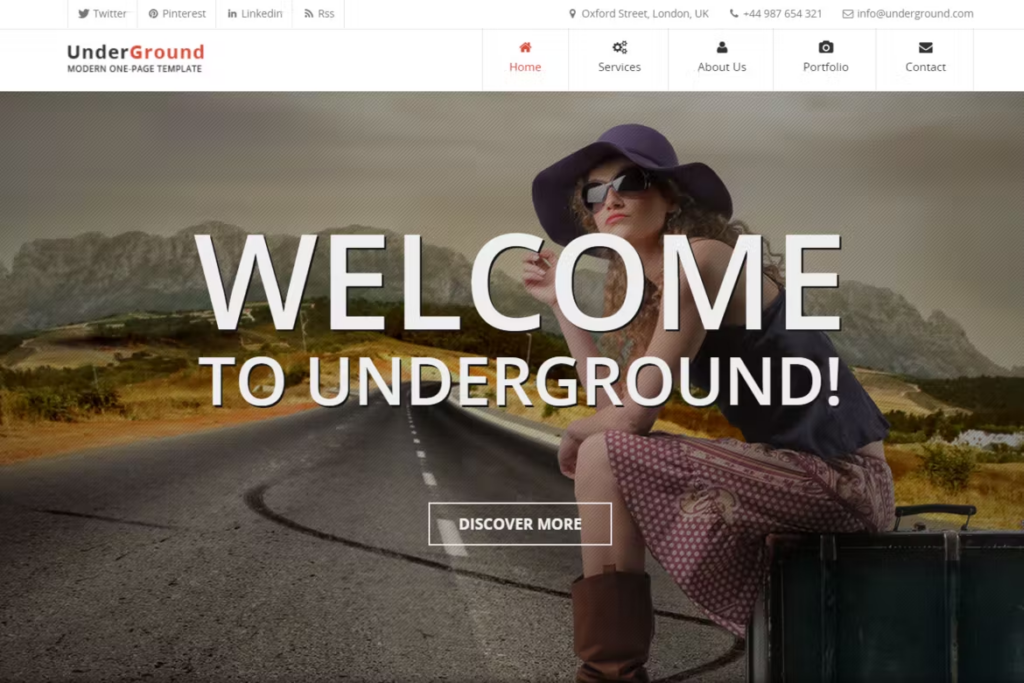Introduction
The evolution of social media has seen a gradual decrease in the attention span of consumers. Research by Microsoft shows that you have only 8 seconds to grab your audience’s attention and keep them engaged in recent years.
This is a significant decrease from the initial 12 seconds in the year 2000, implying that you have very little time to capture and hold the attention of your prospective customers.

However, it’s not enough to just keep prospects’ attention. To successfully market your products and services, you must describe them and highlight their relevant selling points to your target audience.
Your description must be sufficient enough to help your readers understand the benefits they stand to enjoy by buying and using your products and services. Give customers and prospects reasons to choose your brand and products above every other one.
To accomplish this, you must find a way to get your message across in a way that truly resonates with your little time. This is where a well-crafted marketing one-pager comes in.
Before we go any further, let’s define a one-pager and its role in its various forms.
What Are One-Pagers?
A one-pager is a powerful tool that helps companies convey complex information to their target audience in an easy-to-understand way. Consider it a single page that compresses all the crucial details about a specific topic onto a single page.
Its straight-to-the-point and attention-capturing structure ensures that you not only attract the attention of your potential customers, but keep it until you have made your point.
A well-designed one-pager incorporates eye-catching elements like images or graphs arranged in a visually-interesting way to make the content more engaging and easily understood by its readers.
For instance, consider how Mercedes incorporated an image into their marketing one-pager below.

While most one-pagers have a few common elements they tend to include, they are classified into types based on their distinct objectives, target audience, and content.
Let’s look at the various kinds of one-pagers and their unique functions.
Types of One-Pagers
Business Plan One-Pagers

Companies use this type of one-pager to summarize their business plan to investors or potential shareholders. It serves as a starting point for companies before developing a comprehensive business plan and covers the same topics as a regular one.
To be effective, your business plan one-pager must include details such as your products and services, value proposition, market, and positioning in clear and concise language.
It is also important to note that although this type of one-pager is not targeted at your typical consumer, it must contain a visually appealing design that properly reflects your brand.
Company One-Pager
A company one-pager is a brief document that summarizes a company’s key details, such as its products and services, mission, and goals. It outlines your relevant information in a concise manner that not only captures your readers’ attention but also piques their interest in learning more about your company.
Although its primary goal is to ensure readers become interested in your business, company one-pagers serve many other purposes. For example, industry analysts or journalists looking to learn more about your company can use it as a reference document.
Additionally, it has the unique feature of being slightly more comprehensive than other types of one-pagers since it aims to give a complete description of your company.
Product One-Pager

A product one-pager is a single web page or document offering a high-level product summary. Typically, it features multiple product images from different angles to give potential customers a good idea of its appearance.
Product one-pagers often include the product’s performance details and technical specifications, such as size, weight, and other peculiar features. It focuses on a product rather than the company.
Product one-pagers primarily assist in communicating the quality of your products to potential customers and generating sales.
A properly-designed product one-pager must include a clear call-to-action such as “Order Now” that encourages the reader to take action and interact further with the product.
Start-Up One-Pager
A start-up one-pager is a concise document that summarizes the essential features of a business idea or pitch. It highlights the issue the company hopes to solve and the solution it offers.
A start-up one-pager typically includes a company’s business model, competitive advantage, and product pricing and distribution information.
Its main goal is to effectively communicate the important details of the start-up to potential stakeholders, investors, or customers that can help the company succeed.
This one-pager summarizes the start-up’s vision and showcases its potential for growth and profitability to fulfill its purpose.
Marketing One-Pager
A marketing one-pager is a short document that provides valuable information about a product or service in an aesthetically pleasing way to promote sales.
Although similar to a company one-pager, a marketing one-pager focuses more on the distinctive value proposition your company offers prospective buyers.

A marketing one-pager is typically created by a company’s sales and marketing teams to persuade customers and generate sales. However, due to its flexibility, you can also use it in various other contexts, such as trade shows and investor presentations.
Your marketing one-pager must include elements like colors and fonts that create a consistent visual language with your brand and gives your viewers a clear picture of your company’s identity.
Although different types of one-pagers contain varying information based on their purpose and target audience, there are a few key parts of every one-pager.
Key Elements of a One-Pager
Contact Information
You must include contact information such as email address, website URL, and phone number in your marketing one-pagers. Your contact information is especially important because it is the only way potential clients and investors can reach out to you with any questions they may have.
Remember that if your potential clients can’t reach you, they won’t take your one-pager seriously. Customers are more likely to contact and buy from you if your contact information is prominently displayed on your one-pager.

Check out an example of a product one-pager featuring the highly successful Nike, complete with the company’s contact details.
Visuals
Visual elements such as images, graphs, and charts significantly affect your one-pager’s success. When used correctly, they improve the document’s overall design to appeal to the target audience and encourage them to interact with its content.
With high-quality visuals, you give your one-pager a sophisticated look that helps develop trust and credibility with your target audience.
Visual elements such as graphs and charts allow you to communicate complex information to your audience while ensuring they comprehend your message.

Since studies have found that 65% of people learn through visual means, it also increases retention and ensures that your message sticks with the reader.
Branding
Branding elements such as logos, color schemes, and fonts assist in establishing your brand identity with your audience. These elements reflect your company’s personality and values and allow you to distinguish your brand from your competitors.
When you include these elements in your marketing one-pager, you enable your existing customers to recognize and identify your brand. It also catches the attention of prospects and improves your marketing effectiveness among your target audience.
Additionally, using consistent brand elements on your one-pager ensures your target customers perceive your brand as reliable and professional. Branding establishes customers’ trust and encourages them to patronize your products or services.
Call-To-Action (CTA)

A simple and clear call-to-action such as “Contact Us” or “Make a Purchase” must be included in your marketing one-pager to ensure it fulfills its main purpose of driving sales. A compelling CTA prompts its reader to take specific actions, such as buying a product or signing up for a service, depending on the purpose of the one-pager.
A well-crafted CTA instills a sense of urgency in its reader, urging them to take the desired action immediately.
It encourages your potential customers to interact with your brand by telling them exactly what to do while guiding them through the process.
Business Tip: Think about your pricing strategy. Penetration pricing and psychological pricing approaches are often used across different industries.
Product or Service Overview
Marketing one-pagers are primarily created to promote sales. Therefore, you must provide your readers with a clear understanding of what your products or services are.
Your product overview must briefly describe the products or services in question, including their features and technical capabilities. It should also highlight every relevant, unique feature that distinguishes it from competitors.

The product overview section should grab your readers’ attention by helping them understand the product or service and how it can solve their issues.
When properly crafted, a product overview creates interest in your products or services in your readers and eventually leads them to make a purchase.
Competitive Analysis
A competitive analysis compares the products or services in question with similar ones by competitors. It aims to demonstrate your products’ unique properties, how your offering is better than others, and why readers should choose you above every other company that produces similar products.

When conducted properly, it allows you to recognize and address potential customer grievances about your products and services. You can also discover market gaps you can capitalize on and use to your advantage through competitive analysis.
Doing this gives you a competitive advantage and increases the likelihood of your one-pager converting prospects into customers.
Step-by-Step Guide for Marketing One Pager
Define Your Objective
The first step in creating a killer one-pager is to define your objective. Before you write your one-pager, answer the following questions;
- What are your goals for your one-pager?
- What do you hope to convey to your readers?
- What do you want them to do after they read your one-pager?
Your goal could be to promote a new product or service or give potential investors an outline of your business. Having a clear understanding of your one-pagers purpose allows you to tailor its content and design to achieve its specific objective.
It also ensures you keep the interest of your readers by helping you provide only relevant information clearly and concisely.
Identify Your Target Audience
Another important step before creating a killer marketing one-pager is identifying and knowing your target audience. One-pagers are designed to target specific groups of people, and you must know your intended viewers to speak to them directly.
This step not only helps you know who they are, but it also helps you understand their interests, needs, and pain points. With this information, you can create a marketing one-pager that captures their interest and addresses their questions and challenges.
Additionally, understanding your target audience helps you to know where to find them. You can then use this information to decide on the most-effective channels and medium to distribute your one-pagers.
Gather Information
After figuring out who you want to reach, the next step is getting more relevant information to help you make a killer one-pager. For example, the unique information about your product and its selling point can help you stand out and give your audience a reason to buy from you.
Collecting informative and accurate data allows you to create descriptive and credible content for your one-pager. Information collected provides you with product data and statistics, such as sales figures and positive customer feedback, that you can incorporate into future planning to help you gain readers’ interest.
Include only relevant and compelling information in your one-pager, as unnecessary information could cause your readers to lose interest.
Choose a Layout
Now that you have your information, it is time to choose a layout for your marketing one-pager. Ensure that your one-pager’s design is visually appealing and easy to understand regardless of the elements it contains.
An effective layout must appeal to your target audience and present your message in an easily-understood manner.
Before choosing a layout, identify what message you want to convey and what design will best convey that message to your target audience.
Other information, such as your company’s existing branding and content quantity, influences your chosen layout. A minimalist layout, for example, would work well for a marketing one-pager with few details, while you may require a complex design for a well-detailed one-pager.
Consider the following layouts for a marketing one-pager:
Grid Layout
Grid layout arranges content in a grid of columns and rows. It is a popular choice for creating marketing one-pagers because it allows for a clear and organized presentation of information.
It effectively conveys various data elements logically and understandably.
Minimalist Layout
The minimalist layout is a simple design typically featuring lots of white space and straightforward typography. It generally uses a limited color palette with only a few colors used throughout the design.

When combined with high-quality imagery to generate visual interest, this layout helps you create a simple and concise one-pager.
Full-Page Image Layout
Full-page image layouts are often used in marketing one-pagers centered on large, high-quality images. It typically features a centered image with minimal text and other visual elements.

Full-page image layouts are used when marketing a product that can be visually represented, such as a car.
Craft a Catchy Title
Creating a punchy title for your marketing one-pager is essential because it is the first thing your intended audience will see, and it must grab their attention and entice them to read more.
A good title should be captivating, concise, and emphasize the primary features of your marketing product or service. It should be between 10 to 12 words and use simple but emotion-driving words such as “transform” or “revolutionalize.”
A great tip for creating the perfect headline for your marketing one-pager is to study your target audience and consider what will resonate most with them.
Showcase Your Branding
While you may want to avoid adding unnecessary details to your one-pagers, you must showcase your brand identity regardless of the message you intend to convey.
You showcase your branding in your one-pagers using elements that align with your company’s existing brand, such as your logo, color scheme, and typography.
Additionally, include your company’s catchphrase or mission statement to validate your branding message and give your readers a sense of your brand identity.
You want to establish a recognizable brand identity among your target audience because it fosters connection and increases trust in your products.
Write Your Content
After you’ve gathered your data and created your headline and layout, it’s time to write your content. Keep your paragraphs short and straightforward to ensure that your readers understand the message you intend to convey.
In your content, you must include a product overview highlighting the benefits of your product or service and demonstrating how it can make your prospects’ lives easier. One simple way to accomplish this is to explain in simple terms how your product can solve the problems of its users.
Include Visuals
Visuals are an important part of marketing one-pagers because they help you tell your story and effectively convey your message to your target audience.
Including visual elements such as images makes your one-pager more interesting. Since people retain visual information longer, it ensures readers remember your messages.
Graphs and charts also help you communicate complex or technical information to your potential customers in simple terms.
Ensure that you only use relevant visuals consistent with your brand identity. They must also be strategically placed in your marketing collateral in a way that supports its overall objective.
Clear Call To Action
Finally, your killer marketing one-pager should include a clear call to action that directs your viewers on what step to take after viewing the document.
It must be precise action-oriented, and specific to the preferred result. For example, you could use CTAs such as “Get Started” or “Sign Up Today” in your one-pager to prompt your reader to patronize your service.
A good tip for creating a compelling call to action is positioning it where it is easily visible to viewers. You must also use contrasting colors and bold fonts to ensure it stands out and attracts attention.
Proofread and Edit
Make sure to proofread and edit your content before finalizing your marketing one-pager. It helps you detect any errors like misspellings or inaccurate data that can undermine the credibility of your document.
Proofreading also enables you to detect and remove conflicting or irrelevant sentences that might pass the wrong message to your readers.
Reading the content aloud to detect errors or using a spellchecker to identify misspellings is good practice when proofreading.
Additionally, you can have your marketing teams review the documents and provide expert advice on whether your one-pager complies with the company’s overall marketing strategy.
Finalize and Share
To preserve the layout of your one-pager, save it in a shareable format such as PDF before sharing it. After that, distribute it to your target audience via the most appropriate channel.
You can distribute your marketing one-pagers through email or social media or upload them on your website.
Following the distribution of your one-pager to your target audience, you can collect feedback and address new issues by refining its text and design elements.
In Conclusion
Creating a “killer” marketing one-pager can be beneficial for any firm that wishes to effectively inform potential consumers, investors, or business partners about their product or service.
A well-crafted marketing one-pager leaves a lasting impact and drives corporate success. Remember to make your content brief, visually appealing, and customized to your audience’s needs.
With practice and improvement, you can master the art of producing a killer marketing one-pager and take your marketing efforts to the next level. So, start using these strategies and techniques right away and see how they can help you achieve your marketing objectives.
Author
Methodology
- Who?
We are SaaS experts: Our specialists constantly seek the most relevant information to help support your SaaS business. - Why?
We are passionate about users accessing fair SaaS pricing: We offer up-to-date pricing data, reviews, new tools, blogs and research to help you make informed SaaS pricing decisions. - How?
With accurate information: Our website manager tests each software to add a Genius Score using our rating methodology to each product. Our editorial team fact-check every piece of content we publish, and we use first-hand testing, value metrics and leading market data.
